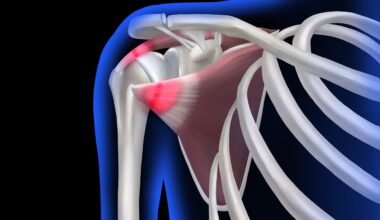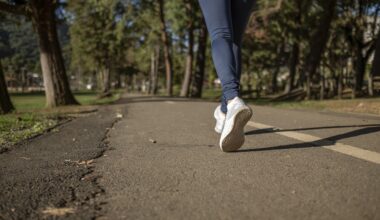Top 10 Rehabilitation Exercises to Speed Up Injury Recovery
Rehabilitation exercises are essential components of recovery for injuries, enhancing both mobility and strength. Committing to a structured exercise program can lead to significant improvements in your condition. The following exercises are designed to gradually rebuild strength, coordination, and flexibility, which often become compromised post-injury. Consulting a healthcare professional before commencing any rehabilitation program is critical. This ensures the exercises align with your specific injury and health status. Some initial movements may be very gentle, meant to help you regain full range of motion without causing additional strain. As you progress, the intensity and complexity of the exercises should gradually increase. Maintaining a routine can also improve mental recovery, allowing patients to feel more active and engaged while healing. It’s important to approach these exercises with patience and consistency, fostering a better overall healing environment. In this article, we delve deeper into ten effective rehabilitation exercises that can facilitate a quicker, more efficient recovery from injuries, helping you return to your daily routine. Keep reading to discover these vital exercises that promote recovery for various injury types.
1. Ankle Alphabet
The Ankle Alphabet exercise is particularly effective for ankle injuries, promoting mobility and strength in the ankle joint. To perform this exercise, sit comfortably on a chair or the floor, stretching your injured leg out in front of you. Using your big toe as a pen, slowly trace the letters of the alphabet in the air. This movement enhances flexibility while promoting muscle engagement. Ensure that you control the motion without experiencing pain. Completing the entire alphabet may take a few minutes and should be performed daily. Be mindful of your posture; keep your back straight during the exercise. If you notice discomfort, pause and consult a healthcare professional. This exercise can be easily modified by performing it with a resistance band. Simply loop the band around the ball of your foot and apply gentle tension as you form the letters. This added resistance will build muscle strength over time. Additionally, you can perform this exercise in the seated position or standing for added difficulty. Adapting the exercise to your current ability is fundamental for safe rehabilitation.
2. Wall Sits are a valuable exercise for rebuilding strength in the lower body, especially after knee injuries. For this exercise, find a flat wall and stand with your back facing it. Walk your feet forward while slowly lowering into a seated position, as if sitting on an invisible chair. Keep your knees at a 90-degree angle and hold this position for as long as you can while maintaining proper form. Start with short durations; even 15-20 seconds can be effective initially, gradually increasing the time as your strength improves. During this exercise, ensure to keep your back flat against the wall, which minimizes the risk of injury. Engage your core to enhance stability throughout the movement. As you build strength and endurance, consider adding variations such as single leg wall sits to challenge yourself. This progression helps in maintaining motivation while significantly aiding recovery. Remember to keep breathing steadily throughout the exercise, providing oxygen to your muscles. Integrating wall sits into your rehabilitation routine will help rebuild leg strength and confidence in your ability to perform daily activities.
3. Hamstring Stretch
The Hamstring Stretch is crucial for maintaining flexibility and preventing stiffness in the hamstrings after an injury. To perform a hamstring stretch, sit on the floor with one leg extended straight and the other bent with the foot placed against the inner thigh of the extended leg. Gently reach towards your toes of the extended leg, ensuring you feel a stretch in the back of your thigh. Hold the position for at least 30 seconds, breathing deeply throughout the stretch. Repeat on the other leg. This simple yet effective stretch alleviates tension while promoting blood flow to the recovery area. Never push to the point of pain; easing into the stretch is essential for safety. To increase the effectiveness, consider using a towel or strap to assist in the stretch. Loop it around your foot and gently pull towards you as you keep your spine straight. Incorporating hamstring stretches into your routine can significantly improve your flexibility while comforting the recovery process, allowing for smoother rehabilitation progress over time.
4. Seated Leg Lifts are excellent for enhancing the strength of the quadriceps, important for any knee rehabilitation. For this exercise, sit on a sturdy chair with your feet flat on the ground. Slowly extend one leg straight out in front of you until it’s parallel with the ground, holding it in this position for a few seconds. Begin with 10 repetitions for each leg and gradually increase the number as strength improves. Focus on controlling the movement; avoid swinging or momentum to retain the effectiveness of the exercise. Engaging your core throughout will also help maintain stability. You can modify this exercise to increase its difficulty by adding ankle weights or performing it while standing with support. This variation will challenge the muscles even further, promoting strength gain in the quadriceps while continually supporting knee function. Regular practice of seated leg lifts can enhance your overall mobility levels, as well as balance, significantly facilitating recovery from various lower limb injuries.
5. Shoulder Rolls
Shoulder Rolls are an effective and easy way to help regain mobility and alleviate tension around the shoulder area following an injury. This exercise can be done while standing or seated. Begin by relaxing your arms at your sides, then gently roll your shoulders upward, then backward, and finally down in a circular motion. Repeat this motion for 10 repetitions and then switch directions. The movement should be slow and controlled, promoting blood circulation and easing stiffness in the shoulder joint. Engaging in shoulder rolls improves joint mobility and helps in recovering strength without straining the area. Functionality in arms is vital for everyday tasks, making this practice beneficial during rehabilitation. Additionally, consider integrating gentle neck stretches at the same time to enhance flexibility throughout the upper body. This can provide a holistic approach to recovery by targeting multiple areas concurrently. Shoulder Rolls is easily incorporated into daily routines, taking just a few minutes to perform without requiring any specialized equipment. This accessibility makes them an ideal rehabilitation exercise, emphasizing a gradual yet effective return to full function.
6. Standing Calf Raises are essential for rebuilding strength and balance in the lower legs after injury. Stand upright with your feet hip-width apart, making sure to maintain a slight bend in your knees to avoid strain. Slowly rise up onto your toes, lifting your heels off the ground while balancing on the balls of your feet. Hold this position for a moment before lowering back down. Start with 10 repetitions, increasing as your muscle strength improves. If needed, perform this exercise while holding onto a countertop or wall for balance support. To make it more challenging, consider adding weights gradually or performing one-legged calf raises. This will not only help you build calf strength but also improve your balance and coordination, essential for daily activities such as walking or running. Integrating Standing Calf Raises into your routine can significantly enhance your recovery journey while building strength around your ankles. This important rehabilitation practice promotes a quicker return to an active life without compromising safety.
7. Glute Bridges
Glute Bridges are an excellent exercise for strengthening the posterior chain, crucial for overall body stability and injury prevention. To perform this exercise, lie on your back with your knees bent and feet flat on the ground. Ensure your arms are positioned at your sides with palms facing down for support. Pushing through your heels, raise your hips towards the ceiling, squeezing your glutes at the top of the move, and hold briefly before lowering back down. This simple movement targets the glutes, hamstrings, and lower back. Start with 10 repetitions, gradually increasing as your strength develops. Paying close attention to your form during this exercise is essential to avoid straining your back. To advance this exercise, try holding the bridge position longer or adding a resistance band around your thighs to increase tension. Glute Bridges can be efficiently incorporated into your daily routine, offering a progressive approach to building strength and stability. Regular practice not only enhances muscle engagement but also plays a significant role in reinforcing recovery from various lower body injuries.





